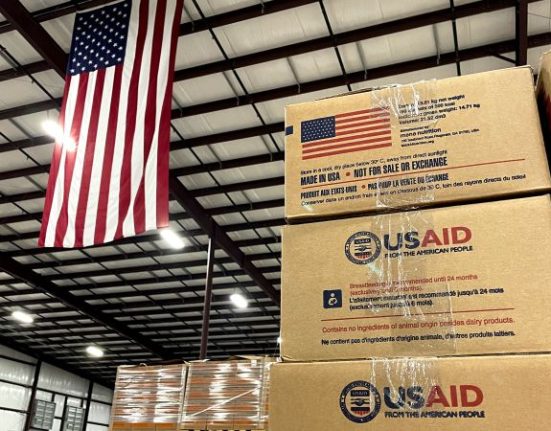Customers that struggle to do everyday banking due to their local bank branch being far away will be pleased to learn that 150 banking hubs are now open, and that the Post Office will continue to offer basic banking services until 2030.
Major banks and building societies have signed a £1.75 billion contract to continue offering services at Post Office counters for at least the next five years. The current deal was due to expire at the end of this year.
The announcement comes as banks continue to close branches at an alarming rate. For example, Lloyds Banking Group will close almost 300 bank branches in 2025 and 2026, while Santander says it will shut 95 branches across the UK, putting 750 jobs at risk.
Sign up to Money Morning
Don’t miss the latest investment and personal finances news, market analysis, plus money-saving tips with our free twice-daily newsletter
Don’t miss the latest investment and personal finances news, market analysis, plus money-saving tips with our free twice-daily newsletter
Widespread bank branch closures are leaving many towns and villages with zero – or a declining number of – bank branches, and many customers must travel further to visit a branch, to do things like pay in a cheque, open or close an account, or speak to an adviser about products such as savings or mortgages.
Some customers may be able to use a nearby Post Office for their banking needs, or a banking hub.
There are now 150 banking hubs up and running. At the end of last year, chancellor Rachel Reeves opened the UK’s 100th banking hub in Darwen, Lancashire, which was established following bank branch closures in the town.
Banking hubs give people access to face-to-face everyday banking services, such as withdrawing cash and depositing cheques, and are operated by multiple banking brands.
The Labour government has pledged to open 350 banking hubs by 2029.
More than 6,300 banks and building societies have closed their doors since January 2015, according to consumer group Which?.
We look at how the Post Office’s basic banking service works and who can use it, as well as how banking hubs work and whether there’s one near you.
Which banking services are available at Post Offices?
The Post Office offers everyday banking services to personal and business customers of 30 banks and building societies under something called “The Banking Framework”.
This includes customers of Barclays, HSBC, Lloyds Banking Group, Nationwide, NatWest Group and Santander. The framework was created in 2017, and will now run until at least 2030.
The services you can use at a Post Office depends on which bank or building society you are a customer of, but broadly speaking, you can check your balance, deposit cash or cheques and make withdrawals.
The list of what you can’t do includes transferring money between accounts, opening or closing accounts, and registering a lasting power of attorney.
According to Which?, some banks are also scaling back the services available through Post Offices.
For instance, Lloyds Banking Group (which includes Bank of Scotland, Halifax and Lloyds) recently told customers they won’t be able to use personalised paying-in slips at Post Offices from 2 June, while cheques will not be accepted after 31 December 2025.
How do banking hubs work?
Banking hubs are owned by Cash Access UK and operated by the Post Office. They are open Monday to Friday, 9am-5pm, and give people access to face-to-face banking services, such as withdrawing cash and depositing cheques. Customers can also check their balance, pay utility bills and top up their gas and electricity.
Community bankers from each of the five banks with the largest number of customers in the area typically come in one day a week to assist their customers with more complex banking issues like debt advice, bereavement services and fraud support.
At the new banking hub in Kirkham, Lancashire, which is the 150th to be opened, the schedule is: Lloyds on Monday, NatWest on Tuesday, HSBC and Barclays sharing Wednesday, Santander on Thursday and Halifax on Friday.
The Treasury said last year that “the roll-out of banking hubs will be a significant boost for local people and businesses, helping to revitalise the local high street and raise living standards across the UK”.
A total of 230 hubs are expected to be open by the end of 2025.
Is there a banking hub near you?
Here’s a list of banking hubs across the UK:
London and home counties
Acton, London
Ampthill, Bedfordshire
Haslemere, Surrey
Luton – Bury Park, Bedfordshire
Rochford, Essex
Royston, Hertfordshire
Ware, Hertfordshire
Welling, Kent
West Drayton, Greater London
Midlands and east of England
Barton-on-Humber, Lincolnshire
Belper, Derbyshire
Buckingham, Buckinghamshire
Clay Cross, Derbyshire
Downham Market, Norfolk
Harleston, Norfolk
Haverhill, Suffolk
Kirkby in Ashfield, Nottinghamshire
Lutterworth, Leicestershire
Mablethorpe, Lincolnshire
Oakham, Rutland
Pershore, Worcestershire
Shirebrook, Derbyshire
Stapleford, Nottinghamshire
Syston, Leicestershire
Watton, Norfolk
North England
Barnoldswick, Lancashire
Batley, West Yorkshire
Bramhall, Lancashire
Cheadle, Staffordshire
Cottingham, East Yorkshire
Elland, West Yorkshire
Filey, North Yorkshire
Heywood, Greater Manchester
Hornsea, East Yorkshire
Horwich, Lancashire
Knaresborough, North Yorkshire
Maryport, Cumbria
Newton Aycliffe, County Durham
Ossett, West Yorkshire
Otley, West Yorkshire
Prescot, Merseyside
Ramsbottom, Greater Manchester
Stalybridge, Greater Manchester
Stone, Staffordshire
Thorne, South Yorkshire
Ulverston, Cumbria
Wath upon Dearne, South Yorkshire
West Kirby, Merseyside
Withernsea, East Yorkshire
South and west of England
Axminster, Devon
Bodmin, Cornwall
Brixham, Devon
Dartmouth, Devon
Dawlish, Devon
Helston, Cornwall
Looe, Cornwall
Royal Wootton Bassett, Wiltshire
Saltash, Cornwall
Shoreham-by-Sea, West Sussex
Sidmouth, Devon
Teignmouth, Devon
Wellington, Somerset
Northern Ireland
Kilkeel
Scotland
Brechin
Cambuslang
Carluke
Carnoustie
Crieff
Cumnock
Girvan
Forres
Jedburgh
Kilwinning
Kirkcudbright
Troon (Ayrshire)
Wales
Abergele
Abertillery
Porthcawl
Prestatyn
Treorchy
Welshpool







